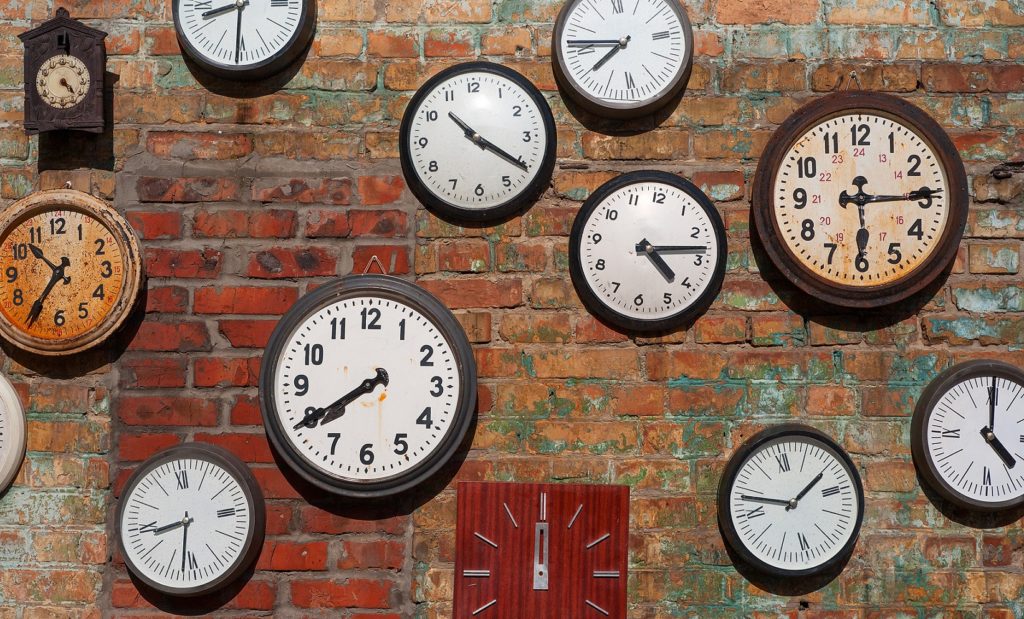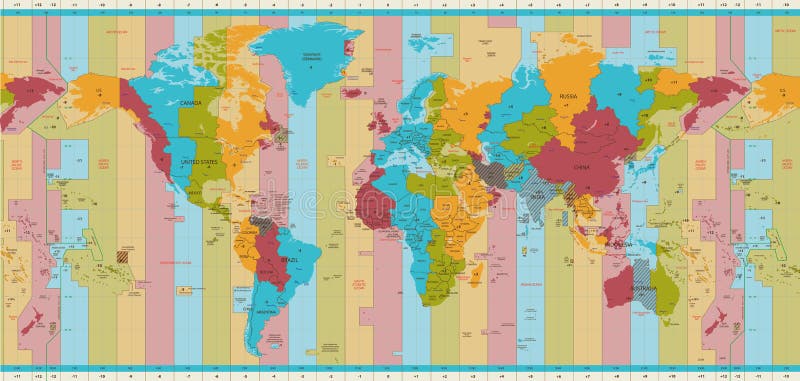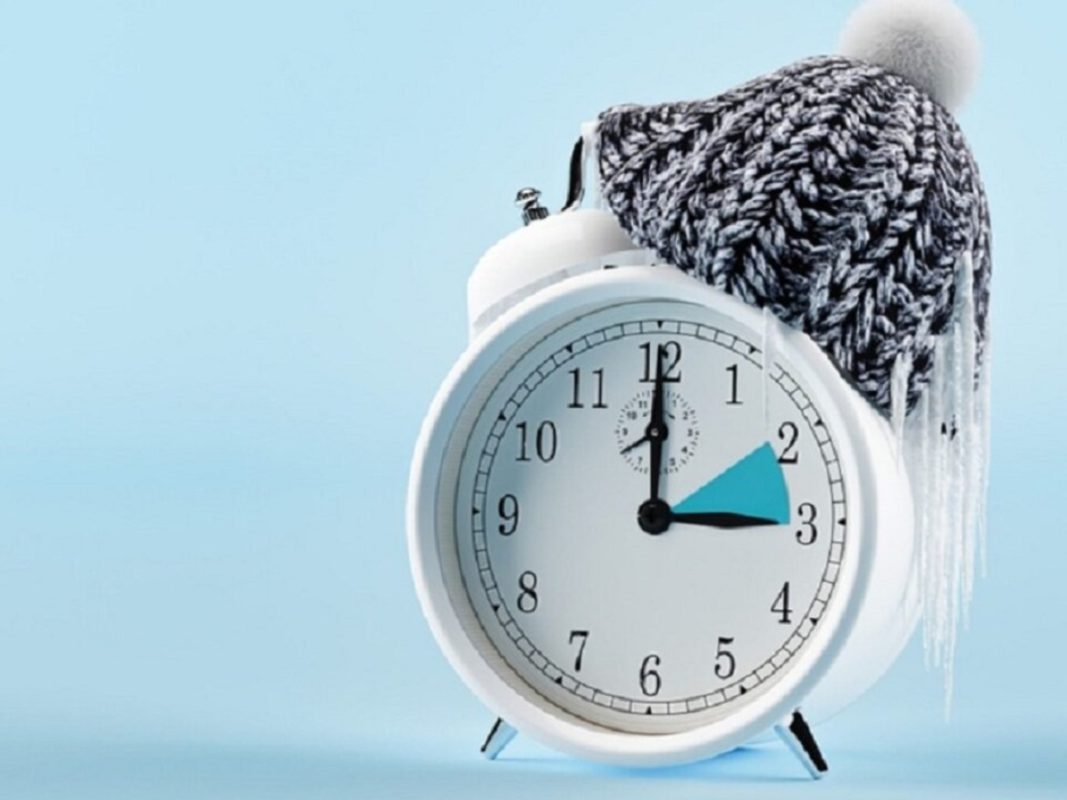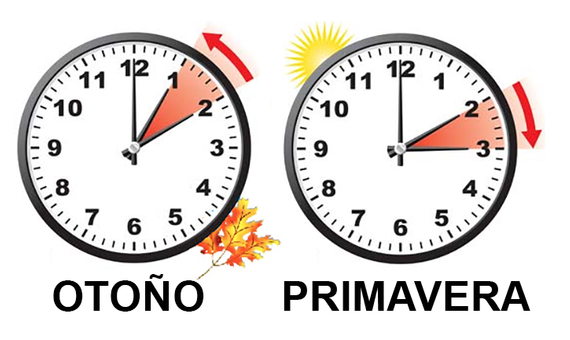
La rocambolesca historia del cambio de hora comenzó una mañana de verano de 1784 en París, donde Benjamin Franklin estaba destinado como embajador de Estados Unidos. Allí cayó en la cuenta de que el sol salía bastante más temprano que en invierno; y pensó que los parisinos debían madrugar más durante el estío y acostarse antes, para gastar menos aceite de las lámparas; de este modo ahorrarían cada año el equivalente a unos 170 millones de euros de ahora.
Pero Franklin no inventó cambio el horario. Solo proponía un cambio de hábitos, algo similar a lo que hizo en 1810 el Parlamento español, cuyo reglamento adelantaba las reuniones una hora entre mayo y septiembre (en lugar de cambiar los relojes). Estos fueron los primeros intentos de adaptarse a un problema del mundo industrializado, que no existía en las sociedades agrarias: la gente se levantaba con el canto de los gallos o el repicar de las campanas al salir el sol.

En Roma, desde antes de la civilización romana, el tiempo de sol a sol (durase lo que durase) se dividía en 12 horas; de manera que las horas estivales cerca del solsticio de verano se hacían, mucho más largas y duraban 75 minutos; mientras en el solsticio de invierno ni siquiera llegaban a los 45 minutos.
NUEVOS RELOJES, NUEVOS HÁBITOS
En el s. XVIII, la manera tan flexible de adaptar las rutinas diarias al sol se terminó cuando se perfeccionaron y popularizaron los relojes mecánicos.
Fue entonces cuando en cada localidad a las doce del mediodía de cada día (el momento más alto del sol sobre el horizonte) el reloj de la plaza principal se ajustaba y cada uno sincronizaba su propio reloj con el de la plaza. La vida diaria comenzó a organizarse en torno a 24 horas siempre iguales, de 60 minutos. Y resultó que cada día y en cada lugar amanecía a una hora diferente.
Fue con la llegada de la Revolución Industrial cuando se implantó la hora estándar y los husos horarios ya que surgió la necesidad de coordinarse y unificar horarios, primero para evitar choques de trenes y luego para comunicarse a distancia en tiempo real.

Pasaron las décadas hasta que a principios del s.XX el constructor inglés William Willet retomó la idea de Franklin, durante sus paseos veraniegos a caballo al amanecer y mientras sus vecinos aún dormían. Desistiendo de intentar hacerles madrugar más, se le ocurrió adelantar los relojes para que todos pudieran aprovechar mejor la luz solar. Y así, de paso, a él no se le hacía de noche tan pronto durante sus partidos de golf.
En España se decidió sumarse a la hora oficial regida por el meridiano de Greenwich, y fue entonces cuando se aplicó la hora a todo el territorio español, incluidas las islas Canarias.
EN BUSCA DE UN HORARIO MÁS NATURAL
Willet editó un panfleto, The waste of Daylight (El derroche de luz solar), y logró que su iniciativa llegara en febrero de 1908 al Parlamento británico, donde un joven Winston Churchill la defendió con ardor: «Un bostezo extra en primavera y una cabezadita extra en otoño, es todo lo que pedimos. Tomamos prestada una hora de una noche de abril y la devolvemos cinco meses después con un interés de oro».
Pero las grandes empresas, líneas de transporte y los científicos orgullosos de haber establecido recientemente un sistema de zonas horarias frenaron la revolucionaria medida.
El domingo 30 de abril de 1916 durante la Primera Guerra Mundial, fue Alemania el país pionero en aplicar la propuesta de Willet, para reducir el consumo de carbón por la iluminación artificial.
Reino Unido reaccionó rápido junto a otros países vecinos, que adelantaron sus relojes durante ese verano y los siguientes. Aunque muchos mantuvieron desde entonces el cambio de hora estacional, otros la instauraban y suprimían aleatoriamente.
En España, el tema del horario siempre ha funcionado de manera distinta. A comienzos de la Guerra Civil (julio 1936) por ejemplo, la zona republicana y la zona nacional marcaban horas distintas en sus relojes. Y al finalizar la guerra, el horario se unificó.
El mayor de los cambios vino en 1940, cuando el territorio de la península y Baleares entraron a formar parte del horario «GMT+1», pasando a compartir huso horario con Berlín «Central European Time».

En los años cincuenta y sesenta el horario de verano perdió popularidad. Hasta 1966 cada ayuntamiento escogía si lo aplicaba y entre qué fechas. La diferencia horaria entre las grandes ciudades oscilaba durante varias semanas al año, causando pérdidas a la industria.
EL FIN DEL CAOS HORARIO
Empujados por la Primera gran Crisis del Petróleo, Estados Unidos y muchos países europeos adoptaron el cambio de hora de forma ininterrumpida desde 1974.
Siendo en 1980, cuando la Unión Europea unificó las fechas del cambio, para evitar desajustes entre sus países miembros. Desde entonces, adelantamos una hora el reloj el último fin de semana de marzo, y atrasamos esa hora el último fin de semana de octubre.
Un año
después 1981, España estableció el cambio de hora el último domingo de marzo y
el último domingo de septiembre.
No fue hasta 1996, cuando siguió el cambio de hora de la Unión Europea.
¿CUANDO ES EL CAMBIO DE HORA EN 2021?

Este año se producirá el último día del mes, en la madrugada del domingo 31, cuando los relojes deberán atrasarse una hora para entrar en el horario de invierno.
Se producira a las 3.00 horas, momento en el que volverán a ser las 2.00h.

*Cambio de hora en Canarias
En el caso de las Islas Canarias, el cambio también se realizará la noche del sábado al domingo, es decir la noche del 30 al 31 de octubre. Aunque en el caso canario se producirá a las 2.00 horas, momento en el que volverá a ser la 1.00.

The bizarre story of the time change began one summer morning in 1784 in Paris, where Benjamin Franklin was posted as US ambassador. There he realised that the sun rose considerably earlier than in winter, and thought that Parisians should get up earlier in the summer and go to bed earlier to use less lamp oil, thus saving the equivalent of about 170 million euros each year.
But Franklin did not invent time change. He was only proposing a change in habits, something similar to what the Spanish Parliament did in 1810, whose rules of procedure brought meetings forward by one hour between May and September (instead of changing the clocks). These were the first attempts to adapt to a problem of the industrialised world, which did not exist in agrarian societies: people woke up to the crowing of roosters or the ringing of bells at sunrise.
In Rome, since before the Roman civilisation, the time from sunrise to sunset (however long it lasted) was divided into 12 hours; so that the summer hours near the summer solstice were much longer and lasted 75 minutes; while at the winter solstice they did not even reach 45 minutes.
NEW CLOCKS, NEW HABITS
In the 18th century, the flexible way of adapting daily routines to the sun came to an end when mechanical clocks were perfected and popularised.
It was then that in each locality at noon each day (the highest moment of the sun above the horizon) the clock in the main square was adjusted and everyone synchronised their own clock with the clock in the square. Daily life began to be organised around 24 hours, always the same, of 60 minutes. And it turned out that every day and in every place dawned at a different time.
It was with the advent of the Industrial Revolution that standard time and time zones were introduced as the need arose to coordinate and unify timetables, first to avoid train crashes and then to communicate at a distance in real time.
Decades went by until, at the beginning of the 20th century, the English builder William Willet took up Franklin’s idea during his summer rides on horseback at dawn while his neighbours were still asleep. Desisting from trying to make them get up earlier, he had the idea of bringing the clocks forward so that everyone could make better use of the sunlight. And that way, by the way, he wouldn’t get up so early during his golf games.
In Spain it was decided to join the official time governed by Greenwich Mean Time, and it was then that the time was applied to the whole of Spain, including the Islas Canarias.
IN SEARCH OF A MORE NATURAL TIMETABLE
Willet published a pamphlet, The waste of Daylight, and succeeded in getting his initiative into the British Parliament in February 1908, where a young Winston Churchill ardently defended it: «An extra yawn in spring and an extra nap in autumn, that is all we ask. We borrow an hour on an April night and pay it back five months later with interest of gold».
But big business, transport lines and scientists proud of having recently established a time zone system put the brakes on the revolutionary measure.
On Sunday 30 April 1916 during the First World War, it was Germany that pioneered Willet’s proposal to reduce coal consumption by artificial lighting.
The United Kingdom reacted quickly, along with other neighbouring countries, which moved their clocks forward during that summer and the following ones. While many maintained the seasonal time change from then on, others introduced and abolished it randomly.
In Spain, the time zone has always worked differently. At the beginning of the Civil War (July 1936), for example, the Republican zone and the Nationalist zone had different times on their clocks. At the end of the war, the time was unified.
The biggest change came in 1940, when the peninsula and the Balearic Islands became part of the «GMT+1» time zone, sharing the time zone with Berlin «Central European Time».
In the 50s and 60s, summer time became less popular. Until 1966, each local council chose whether to apply it and between which dates. The time difference between the big cities oscillated for several weeks a year, causing losses to industry.
THE END OF THE CHAOTIC TIMETABLE
Pushed by the First Great Oil Crisis, the United States and many European countries adopted the time change uninterruptedly since 1974.
It was in 1980 that the European Union unified the dates of the time change to avoid mismatches between its member countries. Since then, we put the clock forward one hour on the last weekend in March and put it back on the last weekend in October.
A year later, in 1981, Spain established the time change on the last Sunday in March and the last Sunday in September.
It was not until 1996, when it followed the European Union time change.
WHEN IS THE TIME CHANGE IN 2021?
This year it will take place on the last day of the month, in the early hours of Sunday the 31st, when the clocks will have to be put back one hour to enter winter time.
During the early hours of Saturday to Sunday morning, the clocks will have to be set back and at 3.00 a.m. they will return to 2.00 a.m., so you will sleep an hour longer.
TIME CHANGE IN THE ISLAS CANARIAS.
In the case of the Canary Islands, the change will also take place on the night of Saturday to Sunday, i.e. the night of 30 to 31 October. However, in the case of the Canary Islands, it will take place at 2.00 a.m., when it will revert to 1.00 a.m.

